Important Keypoints You Should Keep In Mind While Developing Rental Booking Business Like Airbnb

Talking about the billion-dollar companies, Uber and Airbnb surely can be considered as each other’s synonyms.
As per the latest news received about Airbnb, it is setting up to raising another round of funding that will set its value to a whopping amount of $20 B.
While Uber has its top position with $41.2 B, both the industries though not being competitors are disrupting the traditional norms of the travel and hospitality industry.
Do you know what the two giants have in common?
The sharing economy! And that has made all the difference.
So, what the hack is about sharing economy?
Sharing economy, collaborative consumption, collaborative economy or peer economy as you call it, refers to a hybrid market model.
Often than not, such transactions are facilitated by the community-based online services. Let’s understand the term with the help of the Uber model.
Uber and Shared Economy
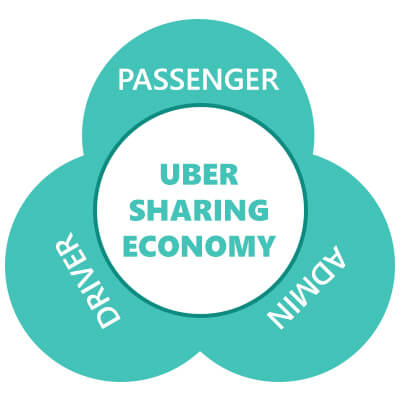
In Uber, there is no economic investment from the admin side, but the entire flow of transaction happens between the stakeholders and the admin makes a cut and hence is called a sharing economy.
· Passenger’s Role:
The passenger books a ride and pays for the service he gets.
· Driver’s Role:
The driver serves the passengers and his service charge is deposited in his wallet.
· Admin’s Role:
The admin receives the payment from the passenger, takes the processing fee, and pays the service fee to the driver.
It starts with the passenger, it ends up with the service provider and the admin plays a mediator in the shared economy.
Airbnb and Shared Economy
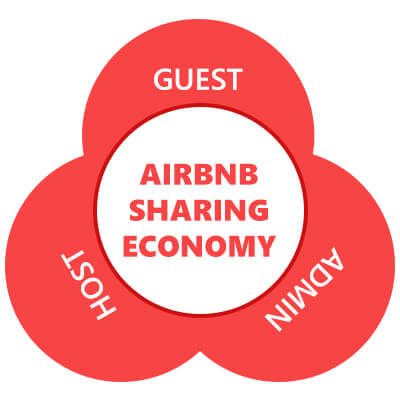
On the same line, Airbnb and its shared economy is like:
Guest’s Role:
The guest books an accommodation and pays for the service he receives.
· Host’s Role:
The Host lists his rental and his service charge is deposited in his wallet.
· Admin’s Role:
The admin receives the payment from the guest, charges the processing fee, and pays the service fee to the host.
Here, it starts with the guest, it ends up with the service provider and the admin plays a mediator in the shared economy.
How Airbnb got on-board?
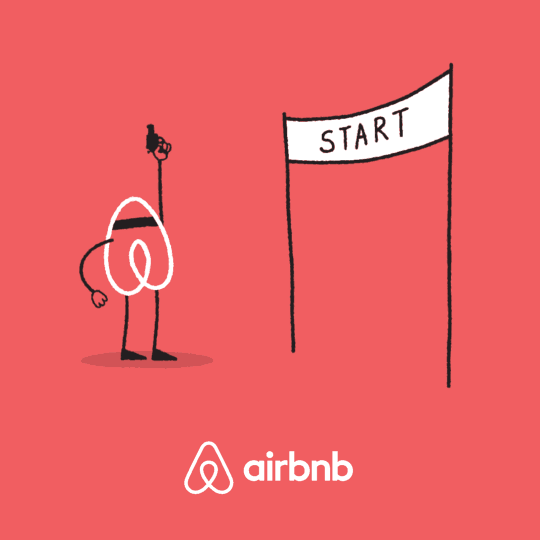
Just as Uber started its journey by making the personal drivers available to everyone, Airbnb started its journey by allowing the vacation rentals to be booked by the guests to the age-old hotel and accommodation industry.
The main reason why people choose Airbnb over hotel is pricing.
Apart from the affordable prices, the graph shows the area startups should target so as to entice the audience to get on board with their business.
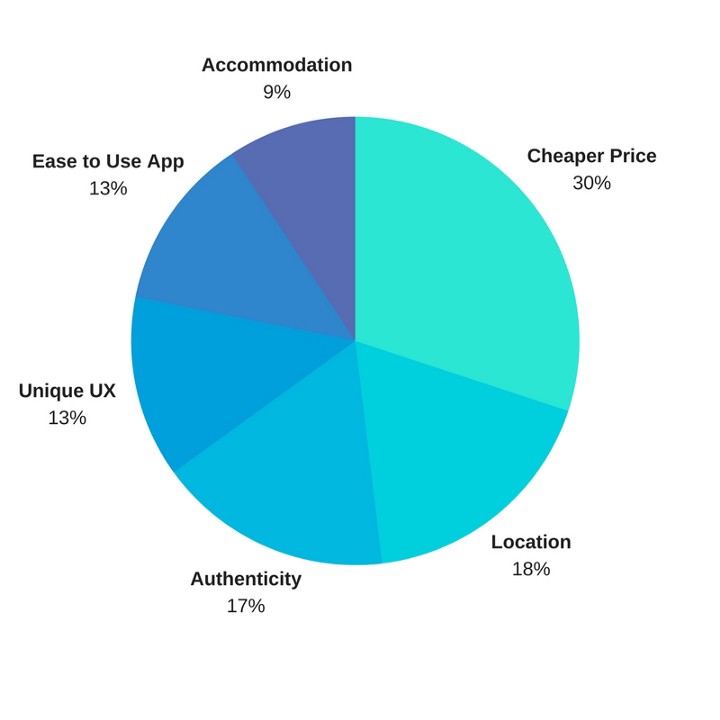
There is more about startups that might interest you, read more about Airbnb and its inception here An Insider’s Story About Airbnb
When aiming to be a startup of Rental Booking business like airbnb kinda, the best advice can be, ”Do things don’t scale.”
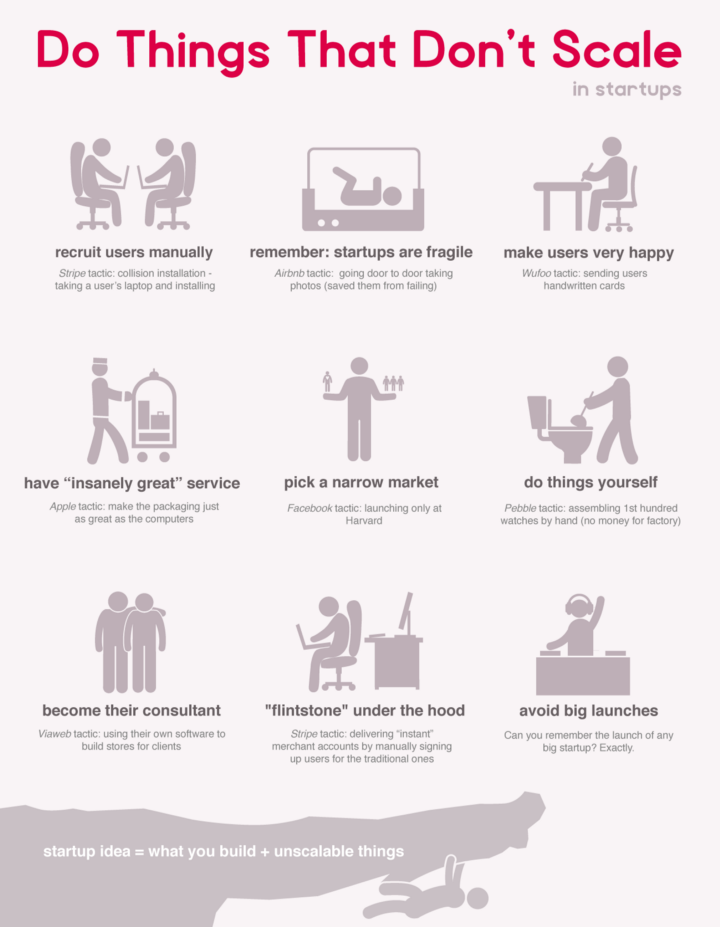
So, you have got a collaborative consumption idea of rental booking app like airbnb, or as you call a sharing economy.
But even this is not enough for the business, you need to do something to grow your idea into a platform for consumption to make an app like airbnb.
All you need is a growth hack.
If you are looking forward to aiming and accomplish a expansion and growth like Airbnb, there are some issues you will have to deal with that includes – international payment, trust and safety measures, search and discovery, messaging and communication, and monetization.
Let’s See Payment Occurrences at an International Level

Provided that Airbnb operates in 190+ countries and 34,000 cities across the world, imagine the number of transactions taking places every single day.
Let’s not forget, Airbnb is a licensed as a money transmitter but if you think Airbnb to handle the payment process all by itself, you are highly mistaken!
To expedite the hefty amount of transaction that happens within the application, many numbers of local payment providers are integrated in the application that supports numerous banks and multiple currencies.
In order to maintain the security of payment, Airbnb just like Uber integrates BrainTree in US which is a mobile and web payment systems.
It emphasizes its easy integrations, multiple payment options, simple pricing, security, and support.
BrainTree provides its customers with a merchant account and a payment gateway along with various features including recurring billing, credit card storage, support for mobile and international payments, and PCI compliance solutions.
It provides the businesses with the ability to accept the payment within their mobile application or online. It has a full-stack payment model which has the capability to replace the traditional model of sourcing a payment gateway and merchant account from the different providers.
Some prefer Stripe instead of BrainTree since the web developers can integrate payment processing into their website without having to register and maintain a merchant account.
Stripe allows both private individuals and businesses to accept payments over the Internet.
The major focus of Stripe is on providing the technical, fraud prevention, and banking infrastructure required to operate on-line payment structure.
The integration can be made possible using:
· Ruby
· Python
· PHP
· Java
· .NET
· Node JS
Comparision: BrainTree Vs. Stripe

Both the payment gateways are practically the same but when integration is concerned, there are cliff notes to consider:
· Usability:
Stripe is considered easier to use, although BrainTree has simplified the stack lately.
· Recurring Billing:
Both Stripe and BrainTree offer the same, Stripe offers a bit more flexibility.
· PCI Compliance:
Both the providers are completely PCI compliant and have advanced fraud checking and prevention technology. They have a very high security and encryption standards.
· Marketplace Features:
Both BrainTree and Stripe offer the same with minor variations.
· International Availability:
BrainTree operates in 40 countries and Stripe operates in 18 countries.
· Integration:
BrainTree has more robust capabilities but the gap is closing on to Stripe.
· Settlement Period:
BrainTree does quicker settlement i.e. within 2–4 days over Stripe’s 7 days.
Why Trust and Safety are necessary

A brand that the users can rely upon and trust is the most basic criteria of any business and a reliable service is of utmost important when the revenue model is totally based on the shared economy.
And here we are talking about developing an app like Airbnb, so the service has to be an ace service.
Long back, an email address and a phone number were the only requirements to build a user profile on various rental platforms including Airbnb.
But talking of the digital age, where even occurrences of fraudulent has increased, Airbnb ensures the trust and safety in a number of ways:
· Masking of contact details:
The contact details before the reservation is booked.
Any message that consists of the user’s contact details, be it phone numbers, email ids, etc., gets deleted automatically by the Airbnb’s messaging system.
This is how Airbnb makes sure that all the transactions go through the site.
The users get to exchange their emails and phone numbers, but only after the reservation is booked.
· Reviews and References:
The reviews are written by the guests and only after the booking process is complete, whereas references are endorsements both hosts and guests can receive from friends. A user can write a reference only when it is requested.
· Social Connections:
Users can find places to rent from hosts who are direct Facebook, friends, or friends of friends, or they can see if a Facebook friend has reviewed a host.
Such a feature adds more trust and confidence in the booking process.
To enable social connections, Airbnb integrated with the API of Facebook, a consistent view of Facebook social graph which determines the mutual objects and common connections between them.
· $6,000,000 Host Guarantee:
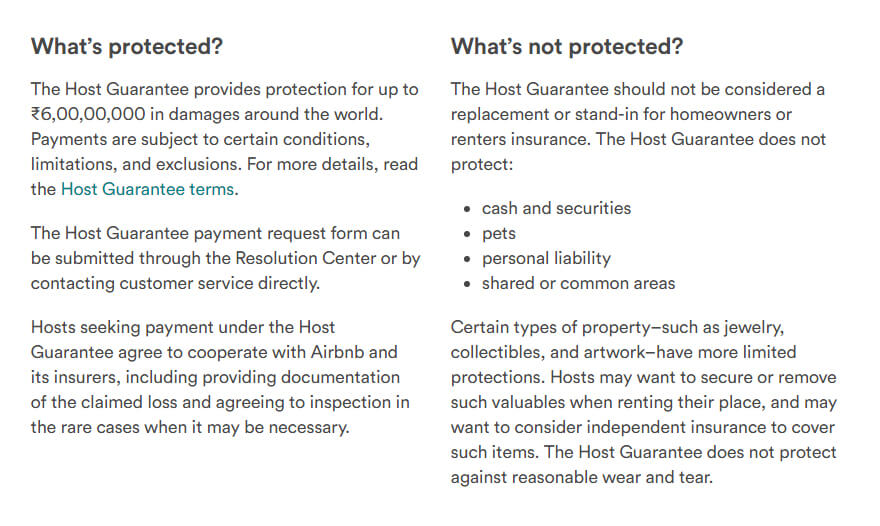
Airbnb facilitates the up to a million dollars in compensation to hosts when the properties are damaged by the guests or is damaged during the stay of the guests.
Airbnb also lists out various norms for what is not protected and the entire responsibility for such properties comes under the responsibility of the guest and not the host.
· Verified Images:
The hosts are offered with an option of having photographers take photos of the accommodations they offer for free.
When the host opts to do this, the hiring of the photographer is done and the photographs taken will be included in their listing with the tag ‘Verified Photo’.
This can be seen in two ways:
1) The photos that the host lists may or may not be so clear and there are wide chances that the guests might get turned off by seeing poor photographs.
2) Another big benefit can be, by letting the hosts list their property with the help of such verified photographs, an additional source of income can be generated by the platform.
How Search and Discovery should work
Another issue with the development of rental booking app like airbnb can be the relevance of search from among thousands and millions of listings.
Let’s see how Airbnb manages its stack and handling a great number of scalability issues.
· Search Algorithm :
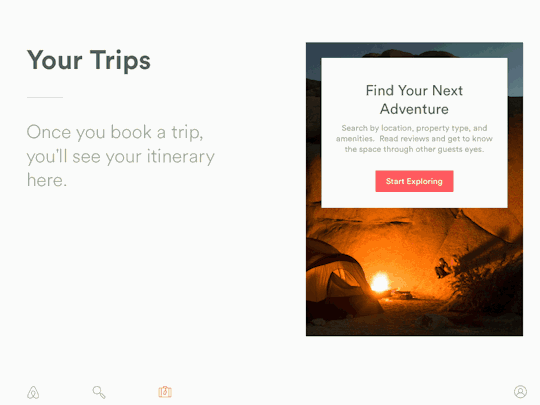
This is quite tricky for the users. A search for our city would return great listings but they were scattered around the town in a numerous neighborhood towns.
This is because the location of the listing is as significant as the overall experience of the trip quality is.
Hence, the relevance of the location is dependent upon the user’s search.
The search algorithm is to determine the location relevance and combines many signal to surface the listings that correspond to the user’s query.
· Wishlists:
For creating a more user-friendly and relatable experience, Airbnb came up with a feature ‘Wishlist’.
This gave the users the freedom to save properties in their personalized account and this increased the user interaction to 30%.
· AirMapView:
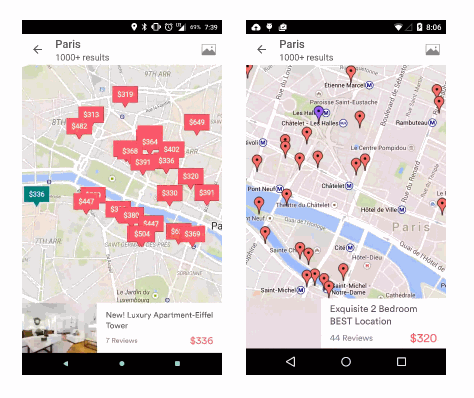
Airbnb developed an open source framework which supports multiple native map providers and activates user interactive Google Maps for the devices with and without Google Play Services.
Apart from these factors, Airbnb uses some standard tools like filters which helps the users find the most relevant place to stay. The users here can search by date, number of guests, listing type, price, amenities, etc.
How Messaging and Communication take place
Don’t you think there should be a specific model for the communication since the contact details are masked and when the host does not respond to a request after 24 hours.
Thus, Airbnb texts hosts who have not responded to a request within the time specified.
The SMS contains information about the potential guest, booking dates, and the price for the stay.
This way it becomes possible for the host to respond instantly on this message.
Airbnb uses Twilio that enables the automation of the mobile communication between rental hosts and potential guests with the help of the text messaging.
It is a cloud communications company which can be used to programmatically send, receive, and track SMS, make VoIP calls, send MMS and make phone calls.
Twilio uses Amazon Web Services to host telephony infrastructure and provide the connectivity between HTTP and the public switched telephone network through its APIs.
It supports over 1,000 global carrier networks for SMS which translates in coverage to over 150 countries.
Well, Uber too makes use of Twilio for the text messaging.
Next is you of course.
Monetization of Airbnb
On Airbnb, the guests are required to pay the service charge of 6% to 12% non-refundable fee.
The exact cost depends on the size of the reservation. The one with the high cost will result in a lower service fee.
This fee is paid only when both the host and the guest approves of the reservation made.
Airbnb also charges from the hosts a processing fee of 3%.
Apart from this, Airbnb charges for the photographers and verifying the listing photographs. Airbnb may also charge a value-added tax on the basis of the local and International taxes and laws.
Wrapping Up
This is an average of $102 a night.
This clearly shows how Airbnb positions itself as a travel and hospitality brand which guns for the growth of the user experience.
The marketing strategy of Airbnb revolves around the features that touch the non-users, referrals, wish-lists, neighborhoods, listings, and references. Though just like Uber, word of mouth has proved to be the most effective growth tool for the rental service.
Who knows, with your innovation and commemoration of sharing economy you can make somebody write about?

